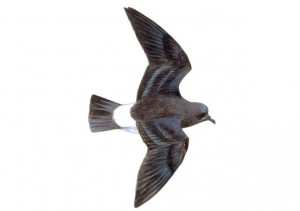Petrels are highly philopatric and return from migratory journeys of thousands of kilometres to breed in the same burrow year after year. During the breeding season, some burrowing petrel species rely on their sense of smell to locate their nest at night, but the mechanisms involved in the homing behaviour after several months at sea are virtually unknown. To understand whether the sense of smell is involved in nest finding at the return from migration and to study the interplay with other positional cues, the homing behaviour and nest choice by Mediterranean storm petrels was explored. During two consecutive winters, research was conducted in a colony with well-used artificial nestboxes that has been studied for the past two decades. Previously occupied nestboxes were experimentally displaced in late winter and then checked for nest choice and occupancy by breeding individuals in the following breeding season. Almost all individuals nested in the nestbox located at the same position as the year before, regardless of whether the nestbox was the one they had previously occupied or another one. During the breeding period, the olfactory preference for the occupied nestbox with respect to another random one was also tested. Again, storm petrels did not show any olfactory preference for their nest. This study implies that storm petrels rely on other positional cues than olfactory ones to home and suggests a mechanism combining tactile and proprioceptive cues to find the nest in the dark. informacion[at]ebd.csic.es: Dell'Ariccia G et al 2015 Mediterranean storm petrels rely on nest position for homing after migration: a test with artificial nest-boxes Anim Behav 107:97-104. DOI information: 10.1016/j.anbehav.2015.06.010


 Las altas temperaturas están provocando que las lagunas y las marismas de Doñana pierdan agua rápidamente
Las altas temperaturas están provocando que las lagunas y las marismas de Doñana pierdan agua rápidamente




